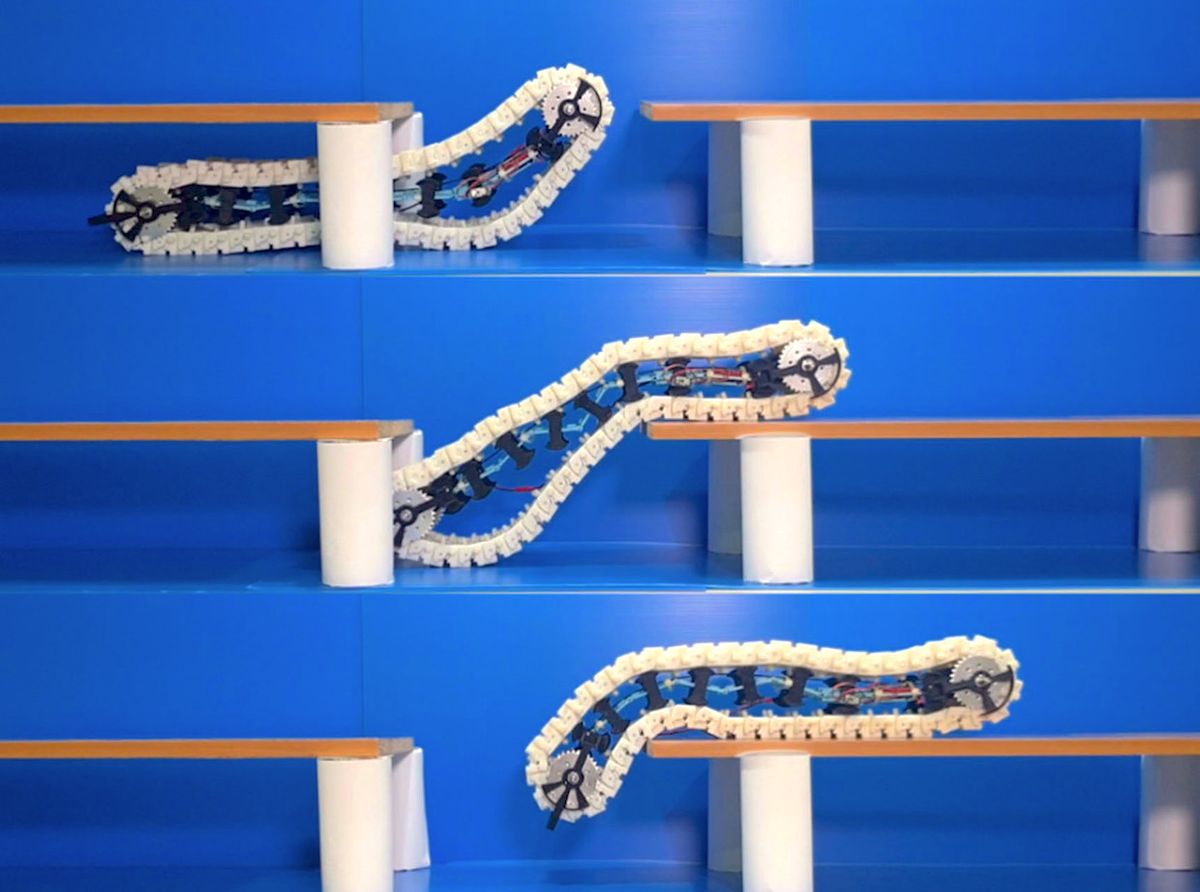David Zarrouk’s lab at Ben Gurion University, in Israel, is well known for developing creative, highly mobile robots that use a minimal number of actuators. Their latest robot is called RCTR (Reconfigurable Continuous Track Robot), and it manages to change its entire body shape on a link-by-link basis, using just one extra actuator to “build its own track in the air as it advances.”
The concept behind this robot is similar to Zarrouk’s reconfigurable robotic arm, which we wrote about a few years ago. That arm is made up of a bunch of links that are attached to each other through passive joints, and a little robotic module can travel across those links and adjust the angle of each joint separately to reconfigure the arm.

RCTR takes this idea and flips it around, so that instead of an actuator moving along a bunch of flexible links, you have a bunch of flexible links (the track) moving across an actuator. Each link in the track has a locking pin, and depending on what the actuator is set to when that link moves across it, the locking pin can be engaged such that the following link gets fixed at a relative angle of either zero degrees or 20 degrees. It’s this ability to lock the links of the track—turning the robot from flexible to stiff—that allows RCTR to rear up to pass over an obstacle, and do the other stuff that you can see in the video. And to keep the robot from fighting against its own tracks, the rear of the robot has a passive system that disengages the locking pins on every link to reset the flexibility of the track as it passes over the top.
The biggest downside to this robot is that it’s not able to, uh, steer. Adding steering wouldn’t be particularly difficult, although it would mean a hardware redesign: the simplest solution is likely to do what most other tracked vehicles do, and use a pair of tracks and skid-steering, although you could also attach two modules front to back with a powered hinge between them. The researchers are also working on a locomotion planning algorithm for handling a variety of terrain, presumably by working out the best combination of rigid and flexible links to apply to different obstacles.
“A Minimally Actuated Reconfigurable Continuous Track Robot,” by Tal Kislassi and David Zarrouk from Ben Gurion University in Israel, is published in IEEE Robotics and Automation Letters.
[ RA-L ] via [ BGU ]
Evan Ackerman is a senior editor at IEEE Spectrum. Since 2007, he has written over 6,000 articles on robotics and technology. He has a degree in Martian geology and is excellent at playing bagpipes.



